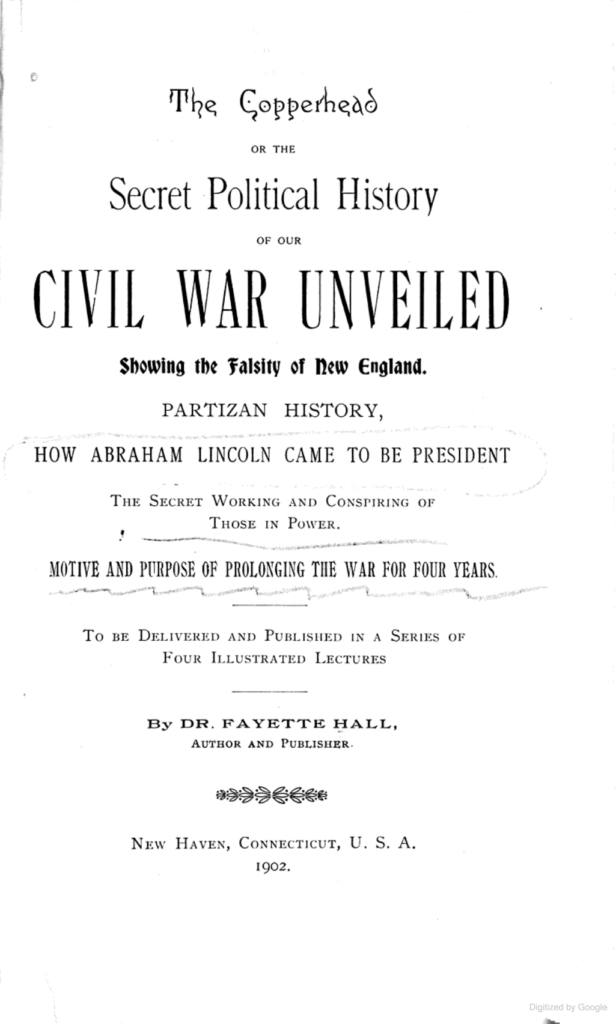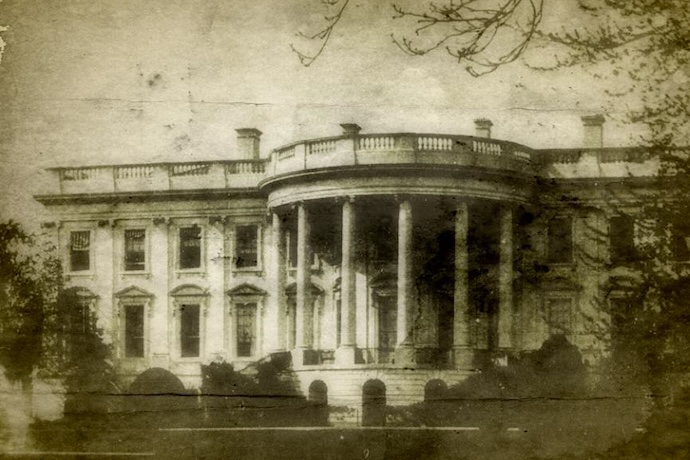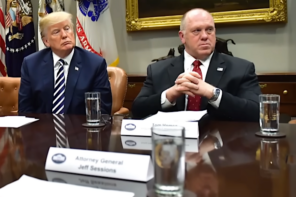Since Donald Trump began campaigning, demons have been a small but growing part of political news. You may remember such scintillating stories as the hydroxychloroquine-hawking physician Stella Immanuel warning that “demon sperm” might cause birth defects; a Catholic priest in Wisconsin who livestreamed exorcisms against voter fraud; and the claim made by Amanda Grace during the ReAwaken America tour that the crowd should be concerned with “mermaids” who were “a division in the kingdom of darkness” and “highly technologically advanced.”
The trouble is that these stories tend to paint these beliefs as if they’re held by a relatively small group of people or merely a product of the “divisive” time in which we live.
They’re right about the divisiveness. While belief in demons is widespread, these beliefs take center stage during politically divisive times. And they have for the entire history of the US.
Let me paint a familiar picture.
America is in turmoil. Many think that the man who governs them is the incarnation of the Devil. Pamphlets, songs, news stories, and literature have all been made vilifying him and connecting his administration with Biblical prophecies about the End of Days. For these people, the Devil’s minions are everywhere, enforcing unpopular laws that have been passed without their consent. Calls for armed resistance against these demonic forces by gun-loving patriots have begun, all of which catalyze around the stirring words of Patrick Henry: “give me liberty or give me death!” The Revolutionary War had begun.
The parallels between today’s United States and British America on the eve of the Revolutionary War should give us pause. Although it might seem outlandish, these parallels illustrate a simple fact: demons catalyze around crisis.
As Ruth Bloch writes, after the Revolution, demons no longer seemed as pressing to the political concerns of the nation. But demons hadn’t disappeared from the American political mind: they were simply biding their time for the next crisis.
On November 14th, 1849, the Fox sisters demonstrated their supposed ability to communicate with the dead at Corinthian Hall in Rochester, NY. “Spiritualism” exploded shortly thereafter; at its height 11 million Americans were talking to ghosts in seances, at public halls, or gathered around Ouija boards. For many, this was a chance to reconnect with the dead.
To others, however, those gathered in parlors practicing seances were being manipulated by demons—demons that had strong opinions around some of the most divisive issues of the day. Women’s suffrage and “free love” came under fire as the doctrines of demons, implanted in the minds of Spiritualists, many believed, by the devils they unwittingly served. Both of these represented crisis points, a threat to traditional ways of understanding gender roles and sexual relations. In such a world, “wives and husbands will be rendered miserable… their families broken up…. [and] carnal degradations and… ultimate wretchedness” would result, according to Christian author J.W. Daniels in 1856.

Title page of The Copperhead, including its 55-word alternate title.
Abolitionism was another crisis point, one that came into sharp focus as the United States entered the Civil War. Since Lincoln had participated in Spiritualist seances, he became the target of accusations that he had intentionally colluded with demons. In the provocatively titled Interior Causes of the War: The Nation Demonized, and Its President a Spirit-Rapper, published in 1863, Lincoln is accused of being in league with the “familiar spirits” of Leviticus and the “Prince of the Power of the Air” of Ephesians. “These very same beings have been directing the Civil War through Lincoln since his first term.”
The author of The Copperhead, Fayette Hall, expands on this accusation, suggesting that Lincoln had held congress with a demon posing as the spirit of Attila the Hun who had offered Lincoln “regal power and a dictatorship for life” for his obedience.
By the 1920s, demons had gone out of fashion again. Between the Great Depression and World War II, demons seemed like a problem that was happening “out there” instead of within the United States.
With the rise of the Soviet Union to a world power and the start of the Cold War, those pesky demons once again entered the world of politics. In the shadow of communism, Merrill Unger, one of the premiere demonologists of the 20th century, wrote Biblical Demonology: A Study of the Spiritual Forces Behind the Present World Unrest. Suddenly, the United States of the 1950s was awash in “spiritistic error,” and Nazis, Communists, and atheists all became emissaries of the demonic, threatening America from without and within.
As the 60s dawned, more and more Christians began to see the world as Unger did. Spiritualism returned in the form of the “New Age” and free love made a comeback. The American way of life that so many conservative Christians were attached to was threatened. Not surprisingly, demons returned with a vengeance.
This crisis was channeled into films like Rosemary’s Baby, The Exorcist, and The Omen, catalyzing this fear around an imagined source: shadowy cults lorded over by the Devil and aided by demonic forces that would come for their children.
This demon-mongering exploded in the 1980s with the “Satanic Panic.” During the Panic, many Americans believed that Satanic cults directed by real demons were preying upon children. While this imagined evil could be worked through an individual—say, in a daycare setting—it could also manifest as illegal drugs, pornography, or other hotly contested political issues.
Ronald Reagan rose to the presidency on the votes of just such Americans, and obligingly encoded their fears into political movements such as the “War on Drugs” and the Meese Report. He also confirmed their demonic understanding of communism, declaring, “Marxism-Leninism is actually the second-oldest faith, first proclaimed in the Garden of Eden with the words of temptation, ‘Ye shall be as gods.’” In other words, the Devil was the first communist.
On the popular level, TV hosts like Oprah and Geraldo produced content that helped convince Americans that their country was overrun by Satanists. The “victims” of “Satanic cults” lined up to speak on shows like these to confirm America’s darkest fears.
By the mid-90s, it became clear that of the twelve-thousand accusations levied over nearly 15 years of the Panic, not a single one pointed to any organized cult activity. This didn’t stop the movement from continuing and sowing the seeds of what became “QAnon,” a group that believes President Trump was anointed by God to stop demonic Democrats from drinking the blood of children. Responding to this perceived crisis, QAnon members were instrumental in the insurrection attempt of January 6th.
Which brings us to the present day. Trump himself declared at a 2024 rally in Waco, TX: “Either we surrender to the demonic forces, abolishing and demolishing (and happily doing so) our country, or we defeat them in a landslide on November 5th, 2024.” To resist these “demonic forces,” two conservative Christian pastors, Lance Wallnau and Mario Murillo, started The Courage Tour.
The Courage Tour aims to turn battleground states over to Trump by marshaling the untapped powers of Christian voters. By Wallnau’s calculations, one-third of evangelicals don’t vote, and when you factor this number against the number of votes needed to tip battleground states like Pennsylvania, there’s not much convincing that needs to be done to turn the election for Trump. It might seem like a small affair, until you realize that JD Vance was one of the speakers at the Courage Tour event in Pennsylvania.
Predictably, demonic rhetoric underlies a lot of the Tour. From what I’ve seen, Wallnau believes that the role of the Church is to keep the Devil in check. The crises that he sees—gender fluidity, trans rights, socialism, communism—are encroaching upon the United States because the Devil has been given too much leeway. Worse still, the Devil has the “demonized” on his side, individuals possessed or infused with demonic energy who might occupy places of power and authority otherwise meant for Christians. This calls for a change, “a revolution,” which Wallnau claims will be non-violent, though he simultaneously defends the violent January 6th insurrection as an “election fraud intervention.”
I wonder if Wallnau knows how many times the same things have been taught by pastors like him in American history? When you see the historical trends laid out, it feels much less like we’re living in the “End of Days” than “the End of Just Another Day.”
I doubt it though. As Americans, we seem inextricably drawn to a rhetoric of the demonic at times of crisis, like moths to a flamethrower. In order to make good decisions at these crisis points, we need to take seriously that the belief in demons is a motivating factor in many peoples’ lives. And understanding this motivating factor is important, because, as it has so often in the past, belief in demons may have a significant impact on the political future of the United States.





